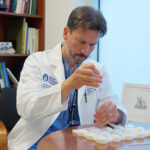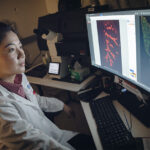How masks protect against COVID-19: Understanding the science
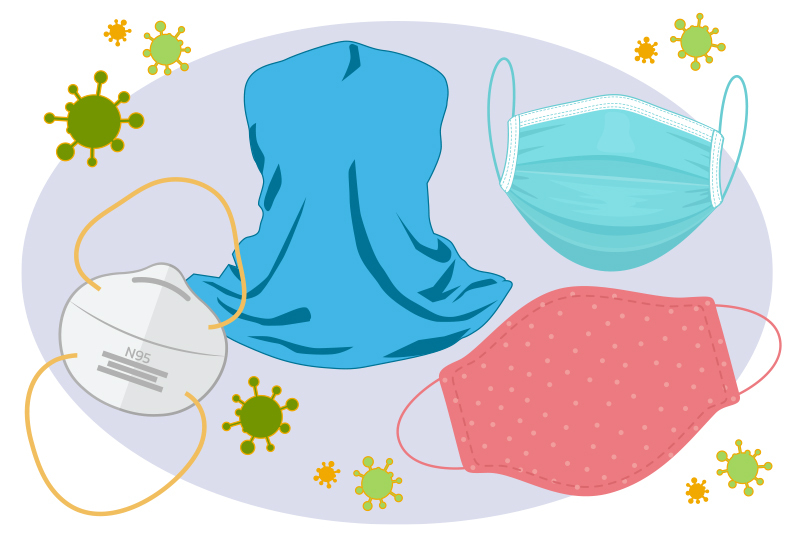
As the number of COVID-19 cases continue to rise in the U.S., including in children, wearing a face covering is more important than ever. We know wearing a mask can get tiresome, but they really are essential. To help understand how face masks can keep you and your child safer, we spoke with Dr. Thomas Sandora, hospital epidemiologist at Boston Children’s Hospital.
How does COVID-19 spread?
When infected individuals talk, cough, or sing, they generate large, wet droplets containing the virus that causes COVID-19. If you’re within 6 feet of someone who is infected, those droplets can land on your eyes, nose, or mouth and infect you, too. And if you’re very close physically to someone who is infected, you can potentially inhale some of the droplets as well.
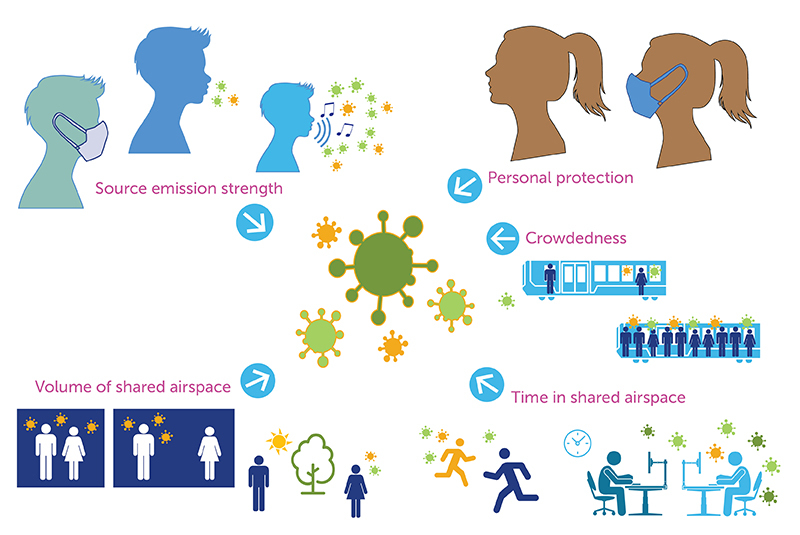
How do masks help stop the spread of the virus?
The main benefit of wearing a mask is preventing spread of the virus. If you are infected yourself and wear a mask, the mask largely blocks those droplets from coming in contact with other people when you talk or cough.
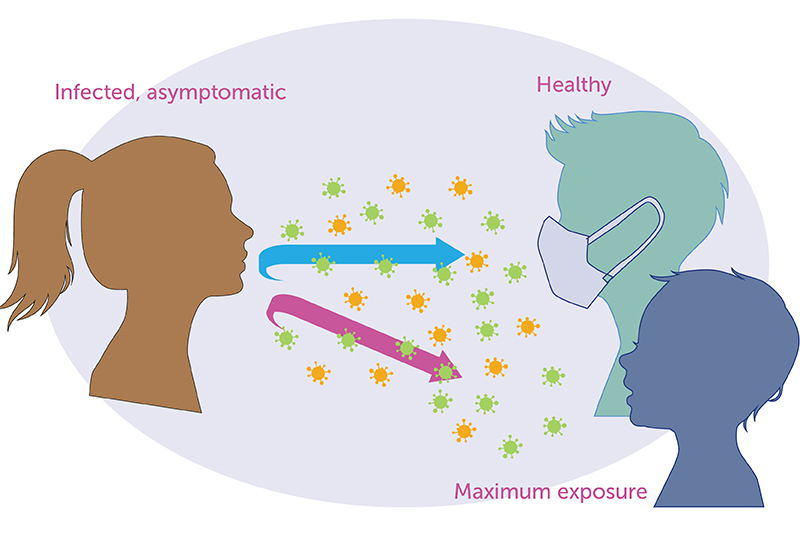
Masks may also protect the wearer. That’s because the amount of virus you are exposed to influences your risk of getting infected or how severe your illness may be.
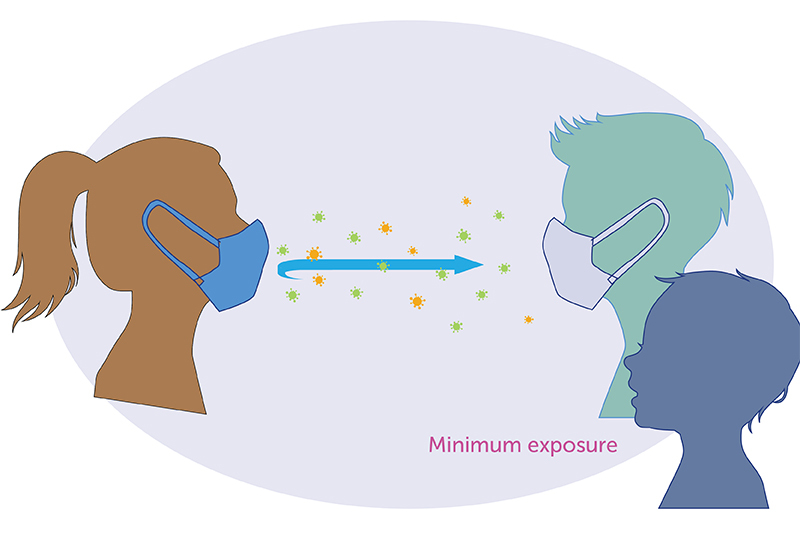
If you are wearing a mask and around someone who is infected, fewer droplets will get through your own mask. “In that case, you are probably getting a lower dose of virus, and that often results in a milder or less severe infection,” says Sandora.
Is there any scientific proof that masks prevent COVID-19 infection?
Yes. One of the most well-known studies was funded by the World Health Organization. Published in a major medical journal, the study compared potential COVID-19 infection rates with a mask versus no mask. Face masks reduced the chances of infection by more than 80 percent. With face masks, the chance of infection was 3.1 percent compared with 17.4 percent without a mask.
A newer study showed that even a crude cloth covering that is less than 100 percent protective against the virus could significantly reduce the number of infections, and ultimately, the number of deaths. And, a study in other respiratory viruses, including the flu and viruses causing the common cold, showed that masks prevented spread of infected droplets when masks were worn.
“When we wear masks, the risk of getting infected is a lot lower,” says Sandora.
What are the best types of masks for my family?
You may have heard about a recent study that tested a variety of different masks. The good news: It found that most of them were effective at blocking droplets.
The most effective tested was the unvented N95 respirator you see on many frontline health workers. But you don’t need to wear an N95 to get protection. If you and your family wear cloth masks, choose varieties with several fabric layers. Masks that fit a bit tighter to the face are a good choice because there are no gaps for the virus to escape. Masks with a moldable piece across the nose bridge will help shape the mask to the face for a closer fit; they may also help keep your glasses from fogging up.
I think most of the available masks — whether they are medical masks, cloth face coverings, or neck gaiters — are going to provide a similar amount of benefit in terms of preventing an infection from spreading itself.”
– Thomas Sandora
Are there any types of masks I should avoid?
Hold your mask up to the light: If it appears to be see-through, don’t use it. Such masks probably aren’t going to block as many particles as more opaque masks or those with more layers.
Masks with an exhalation valve, similar to those used in construction work, aren’t a good option either. This includes N95 respirators with exhalation valves. “They completely defeat the purpose of a mask,” says Sandora. “They allow breath and infected droplets to be exhaled without any filtration.”
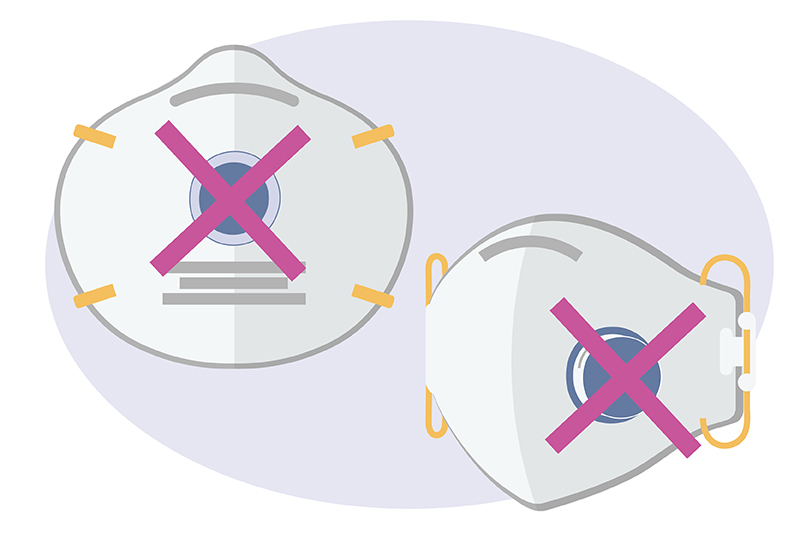
What about neck gaiters?
While neck gaiters did not perform well in the first research study, “this probably has more to do with the thickness of the fabric than the style of the face covering,” says Sandora.
Supporting this, a newer study comparing single-layer versus two-layer neck gaiters, shows they performed similar to cloth masks at preventing droplet spread. They both prevented spread of very large droplets up to 30 centimeters away, about 11 inches. While the double-layer was better than the single layer gaiter for smaller size droplets, a doubled-over single-layer gaiter blocked more than 90 percent of all the droplet sizes tested.
What type of mask is best for kids?
“I recommend whatever type of mask your child can reliably wear throughout the day,” says Sandora. “I think most of the available masks — whether they are medical masks, cloth face coverings, or neck gaiters — are going to provide a similar amount of benefit in terms of preventing an infection from spreading itself.”
Choose a mask your child really likes and help them practice wearing it. They’ll be more likely to wear it and less likely to constantly fidget with it or take it off.
One exception: Children under age 2 shouldn’t wear masks.
What can parents do to maximize the effectiveness of masks?
Remind your child not to touch their mask to adjust it throughout the day. Touching a contaminated mask will spread any germs onto your fingers increasing your chances of becoming infected. This is one more good reason to find a comfortable mask that your child will agree to wear.
Always clean your hands, either with soap and water or an alcohol-based sanitizer, before touching your mask and try not to touch the outer part of it. Remove it with clean hands by the ear loop so that you are not touching the outside, which could be contaminated.
If you’re using disposable surgical ear loop masks, throw them away at the end of the day, or if they become wet. Cloth masks should be washed frequently.
And use fresh, clean masks whenever possible. “If any mask has become moist or wet with breathing secretions, it will not function as well,” says Sandora.
Get more answers about Boston Children’s response to COVID-19.
Related Posts :
-

Promising advances in fetal therapy for vein of Galen malformation
In 2024, Megan Ingram* of California and her husband were preparing for the birth of their third child when a 34-week ...
-

The hidden burden of solitude: How social withdrawal influences the adolescent brain
Adolescence is a period of social reorientation: a shift from a world centered on parents and family to one shaped ...
-

A toast to BRD4: How acidity changes the immune response
It started with wine. Or more precisely, a conversation about it. "My colleagues and I were talking about how some ...
-

A unique marker for pericytes could help forge a new path for pulmonary hypertension care
Pulmonary arterial hypertension (PAH) is a rare condition that’s difficult to treat. The hallmarks of the disease — narrowing of ...


